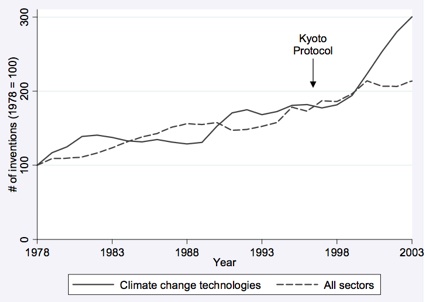Although rumors of its death may be exaggerated, the Kyoto Protocol hasn’t so far been anyone’s idea of a rip-roaring success. The question remains: is the international treaty fundamentally flawed, or is it a fixer-upper that bureaucrats are slowly tweaking into an effective carbon-fighting regulatory framework?
Two pieces of recent evidence boost the fixer-upper view. The first is a report from a prominent research group suggesting that a large part of the European Union’s drop in carbon emissions last year are attributable to the cap.
EU emissions dropped by 3 percent in 2008. According to New Carbon Finance, 40 percent of this drop is due to Kyoto. Another 30 percent is due to the recession. Much of the drop came from a switchover from coal to natural gas.
To be sure, this is a modest improvement. The drop itself is small, and natural gas is still a fossil fuel. Nevertheless, this is how a carbon price works: gradual, steady pressure yields incremental movement toward cleaner technologies. The mechanism appears to be sound, and legislators are presently engaged in the political task of making the cap more stringent.
The second piece of evidence is a study showing that green patent counts are rising in countries that have adopted Kyoto. In the long term, innovation is crucial to defeating climate change.
Innovation is also notoriously hard to measure. Researchers have long used patent counts as an imprecise gauge of how much effort is being put into applied technology development. And by that measure, Kyoto seems to have coincided with a burst of clean-tech innovation in member countries:


